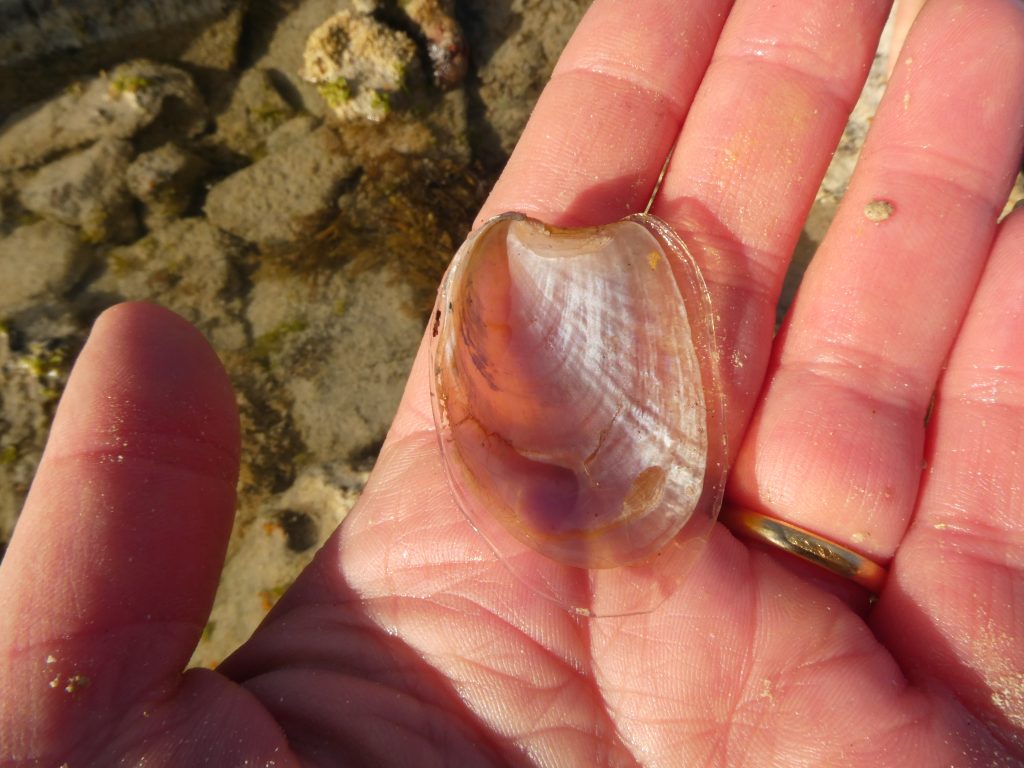Workshop series continues with Rockpool ramble and water bug fun at the coast!
Over the past month we have continued our Hutt Bay workshops and working bees project with a rockpool ramble at Cape Douglas and aquatic macro-invertebrates (aka water bugs) at Hutt Bay.
A community rockpool ramble was held at Cape Douglas where we were joined by some seasoned rockpoolers, as well as some new faces. We started with a quick beach clean-up along the foreshore before venturing onto the intertidal reef.
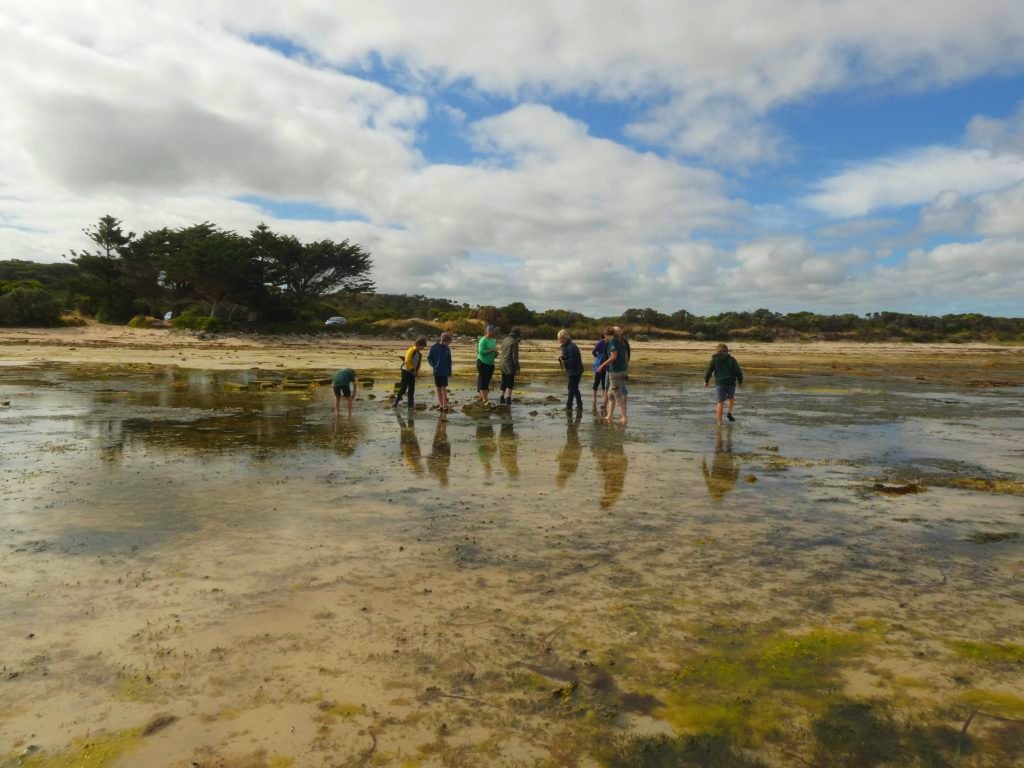
During our wander around the reef we were delighted to find sea hares numbering in the hundreds! Sea hares mate in December and lay their spaghetti-looking egg masses on rocky reefs. We were excited to find a couple of patches of these bright yellow squiggles camouflaging quite well amongst the algae, sea grass, and rocks.
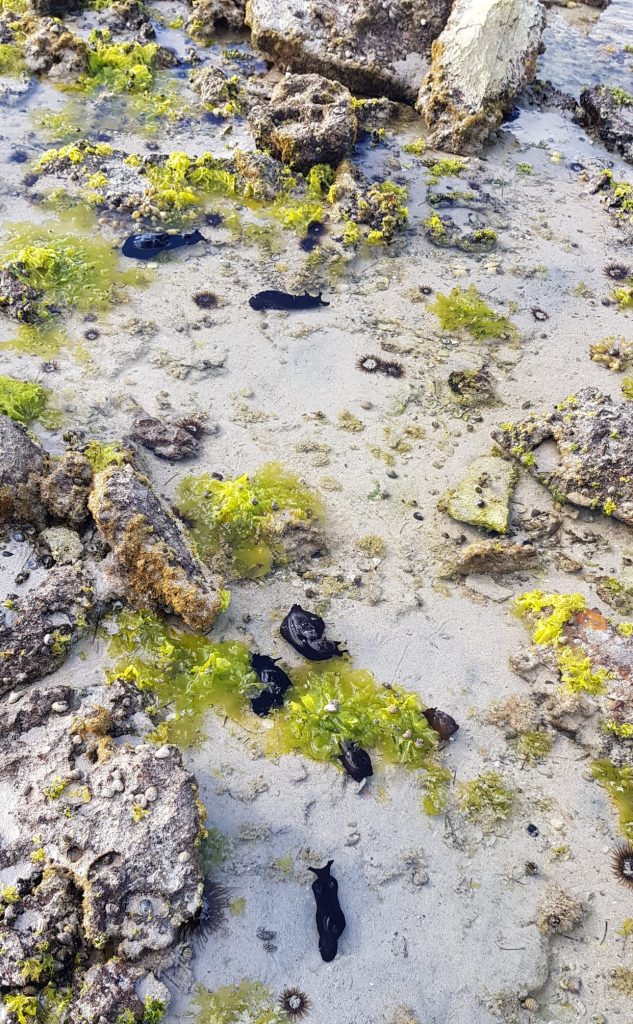
We saw two different species of sea hares; a smaller lighter coloured one (below left) and a larger darker one (below right). You can read more about these species of sea hares in a previous blog here.
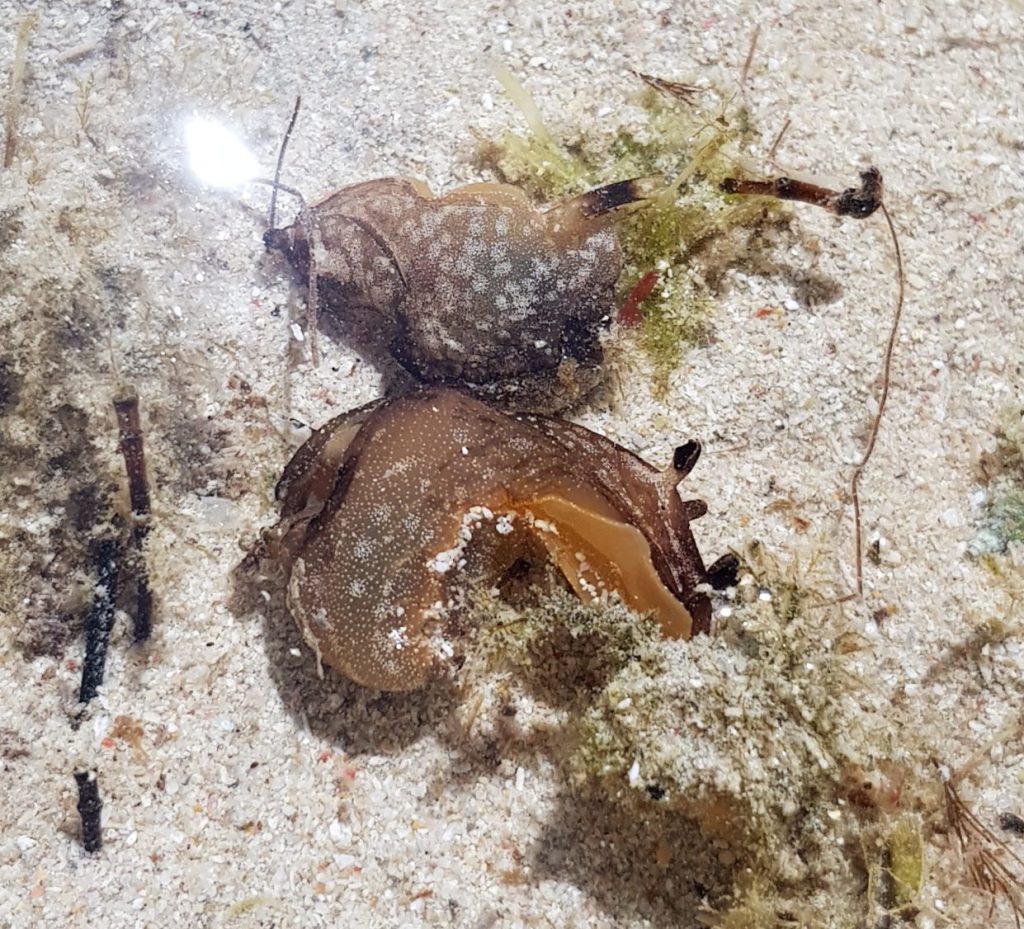
One species of sea hear found is Aplysia parvula and is easily idetnifyable because of its small size (up to about 5 cm long) and the black edging on its parapodia (wings). Photo: Jess Bourchier. 
The second species of sea hare found is as yet unidentified. Photo: Jess Bourchier.
NGT’s Rose discovered a perished sea hare and found its shell which is usually hidden by the parapodia (aka wings) when the animal is alive. The shell is very thin and light, and breaks easily, which explains why we don’t commonly see them on beaches or reefs.
Sea anemones were also in abundance, and further out towards the rocks and boulders other interesting creatures were found. Many eight armed sea stars (chitons) flat worms, brittle stars, and even a nudibranch were found under rocks. This area requires quite a low tide to explore, so it was exciting to get to this otherwise hard to reach area.

Sea anemone (Anthothoe albocincta). Photo: Jess Bourchier. 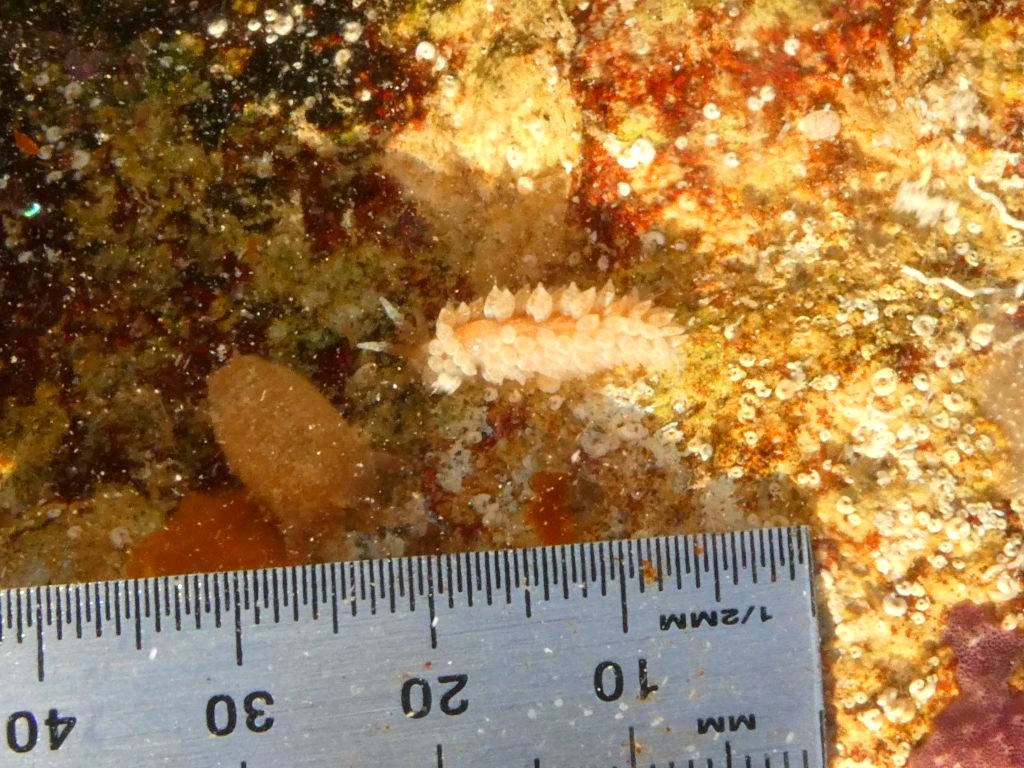
Nudibranch (Anteaeolidiella sp). Photo: Jenny Duggin. 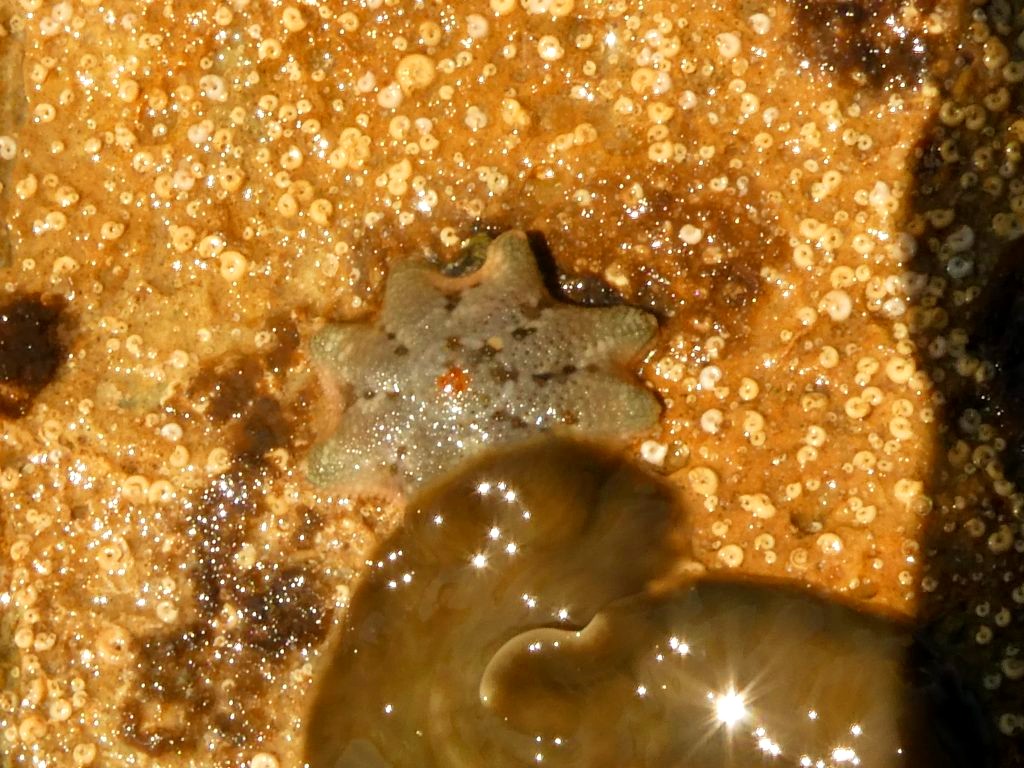
Eight armed sea star (Meridiastra caloar) and flat worm. Photo: Jenny Duggin. 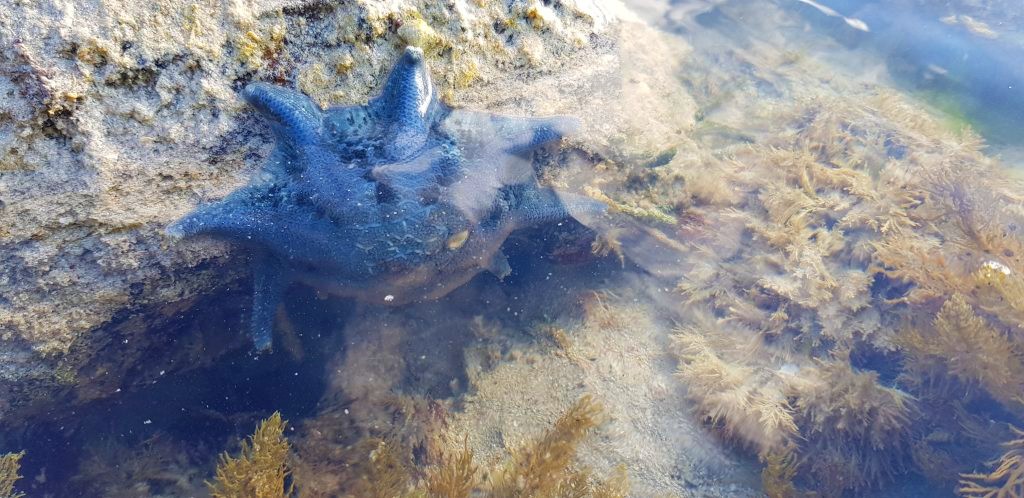
Eight armed sea star (Meridiastra caloar). Photo: Jess Bourchier. 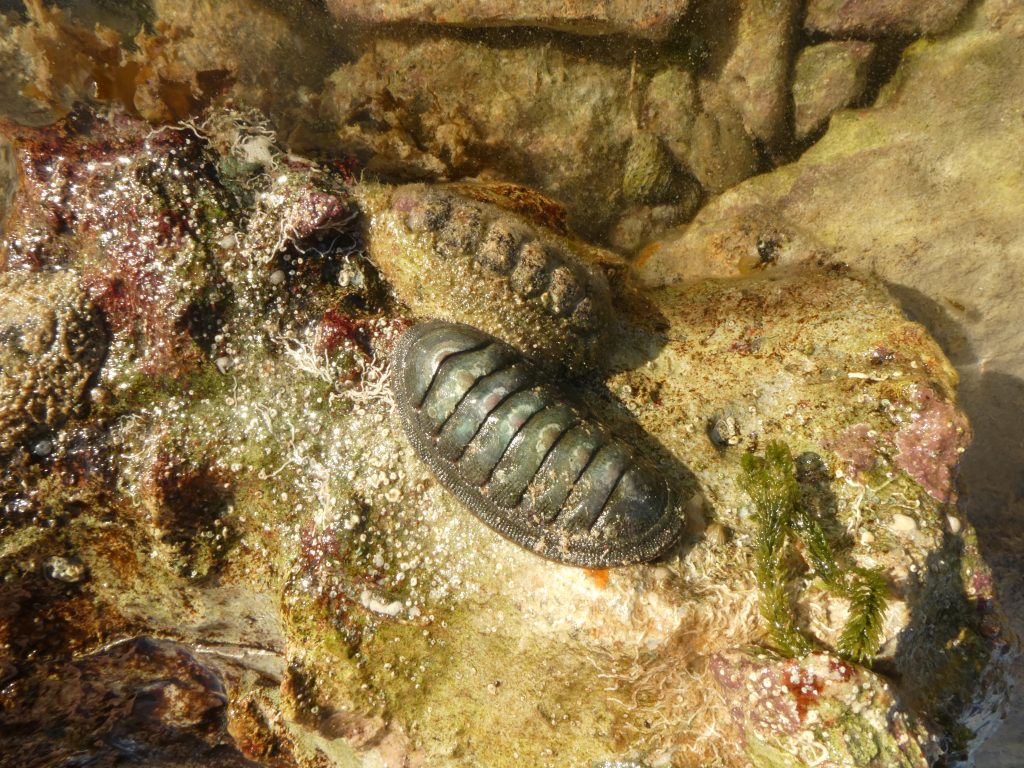
Different types of chitons. Photo: Jenny Duggin.
If you’re interested in exploring rocky intertidal reefs, this time of year offers some exceptionally low tides and is a great time to go looking. Just remember that intertidal reefs are protected and that the removal of animals is prohibited (from the high water mark to water that is 2 m deep at any time). Let me know what you find!
Also, as part of the Hutt Bay workshops and working bees project we recently hosted a wetland exploration and water bug event for families who are part of the home schooling community. The students were fascinated by the damselfly and dragonfly nymphs, scuds, water mites, fishing spiders, gilled snails, midge larvae, and numerous tadpoles at various stages of metamorphosis we found. We also found some tiny fish too small to identify.
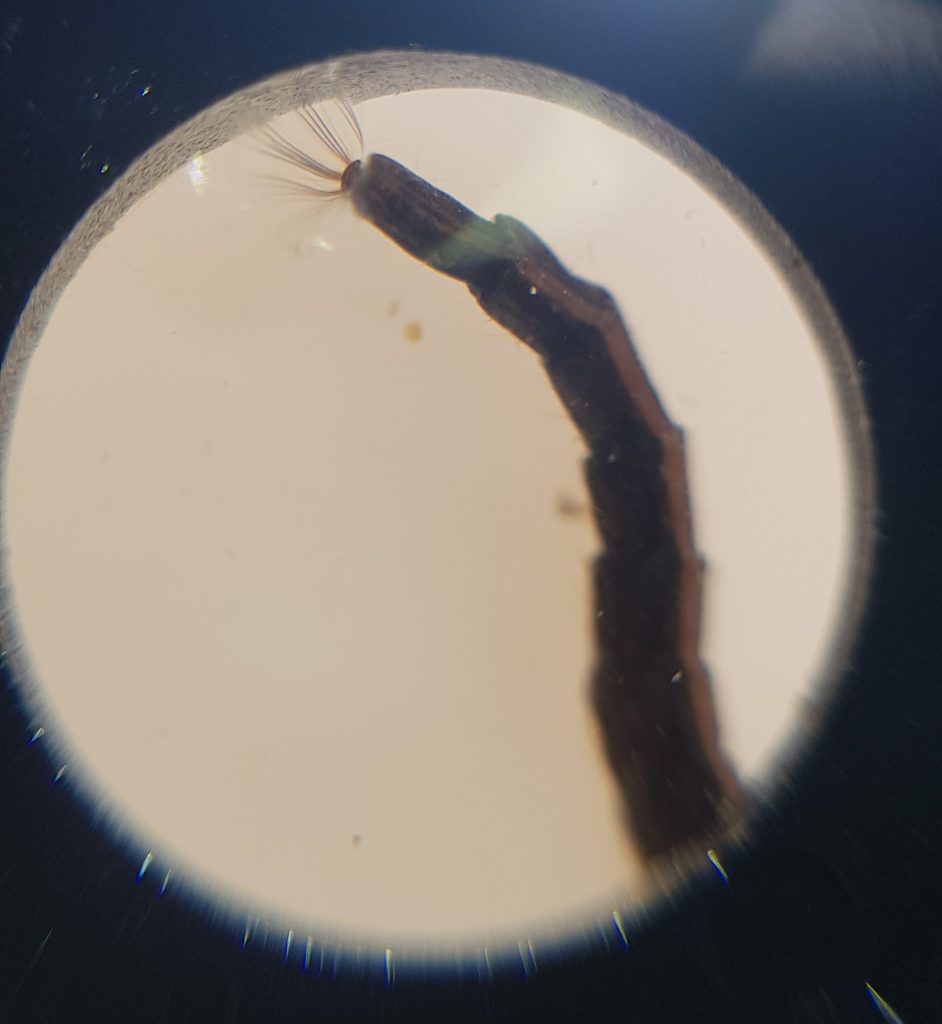
Soldier fly larva. Photo: Jess Bourchier. 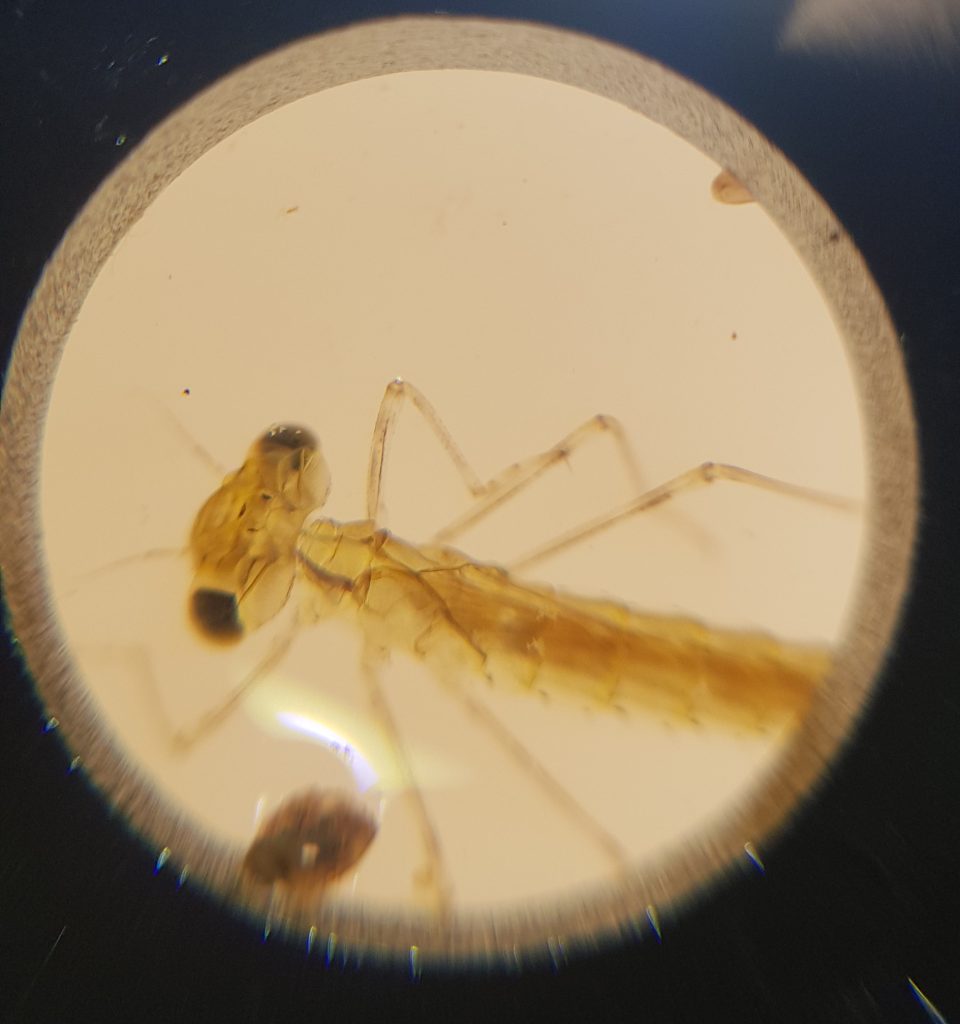
Damselfly nymph. Photo: Jess Bourchier. 
Beetle larva (check out those pincers!) Photo: Jess Bourchier. 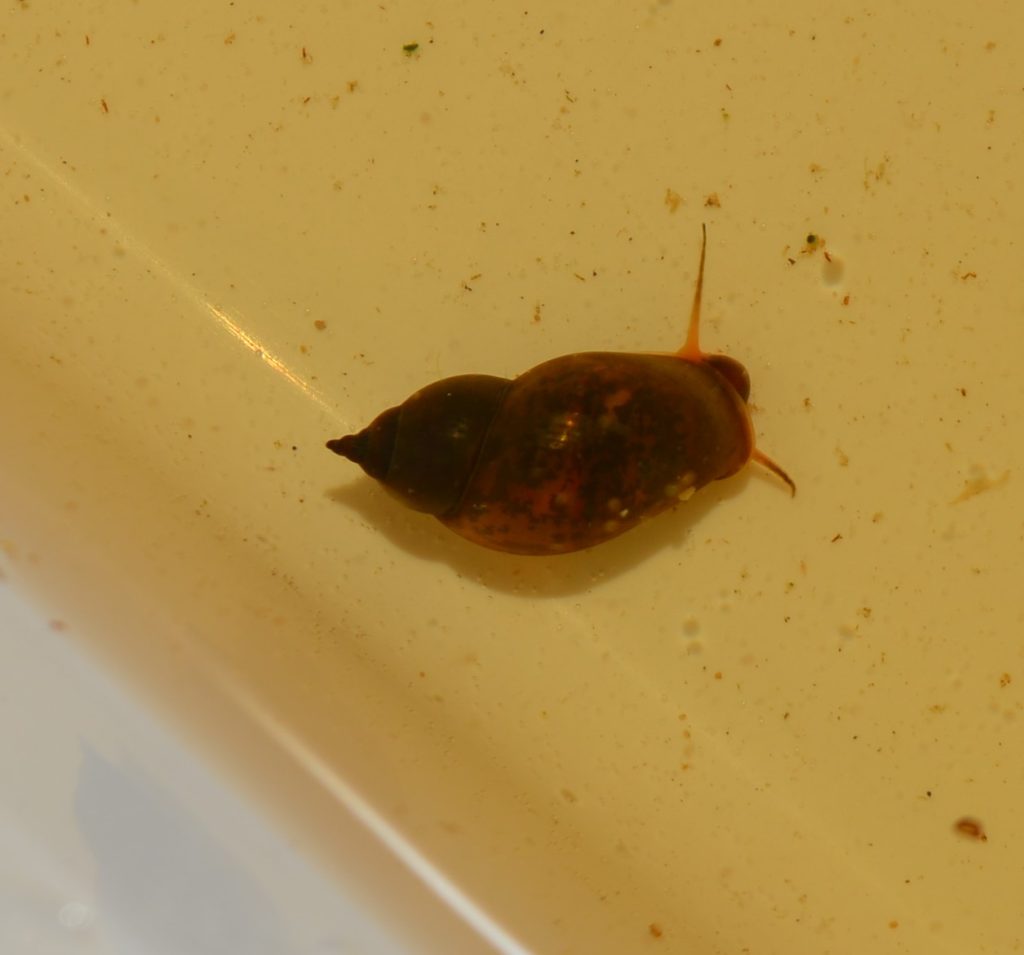
Gilled snail. Photo: Jess Bourchier. 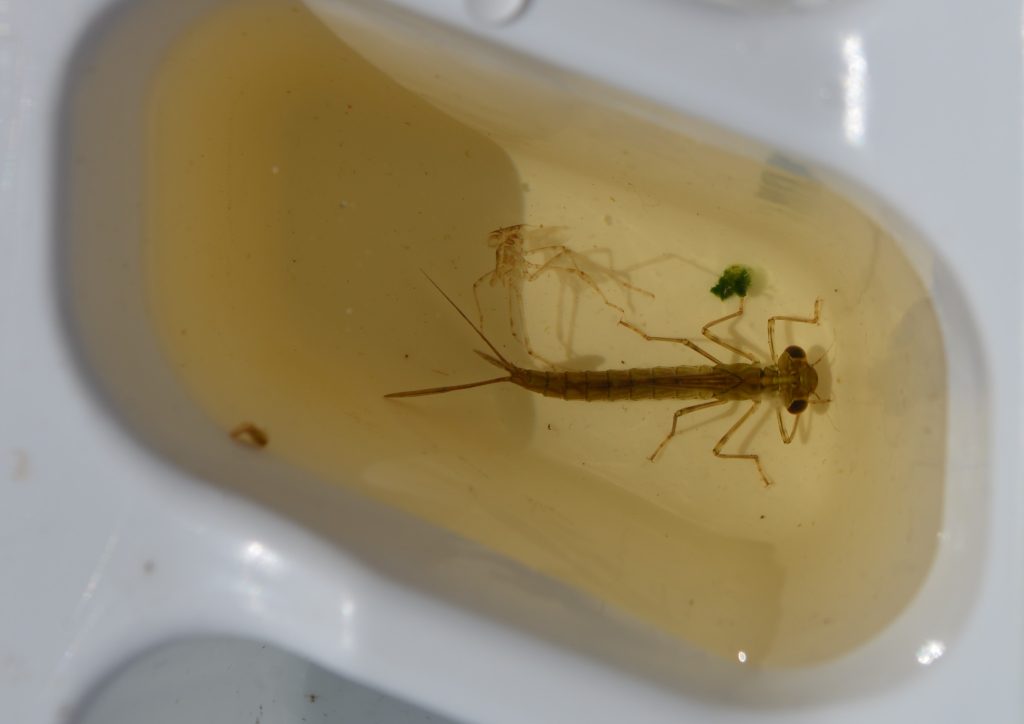
Dragon fly nymph. Photo: Jess Bourchier. 
Brown tree frog (Litoria ewingii). Photo: Jess Bourchier.
We’ll be running several more events with the home schooling network and the public as part of this project in the new year.
The Hutt Bay Wetland Reserve workshop and working bees project is supported by the Coast Protection Board through the Coastal Community Participation Grant.



